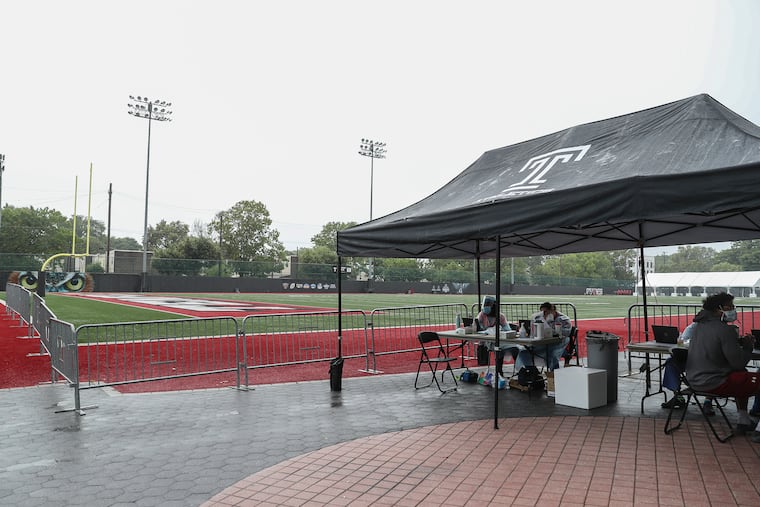Latest NCAA coronavirus guidance hits local colleges with a thud (and a price tag) | Mike Jensen
"It's a mess,'' one administrator said of the whole landscape.

The latest “Resocialization of College Sport” missive from the NCAA hit the inboxes of college sports administrators on Thursday afternoon. It came with a subtitle — “Developing Standards for Practice and Competition.”
It all came as a guidance, not a mandate, one athletic director pointed out.
“Reduction of liability to the NCAA,‘' one athletic director said of the recommendations, as opposed to requirements.
What’s going to be the hardest COVID-19 recommendation to follow? One NCAA Division III league administrator went straight to the bullet point that said: “Testing and results should be obtained within 72 hours of competition in high contact risk sports.”
“NCAA says we can use funding for testing,‘' the DIII administrator said. “But how?”
The administrator explained there is grant funding for programming “to enhance the student-athlete experience. In April, the NCAA said we could use it for PPE [personal protective equipment] and the like.”
Now, for testing.
“Testing strategies should be implemented for all athletics activities, including preseason, regular season, and postseason,” the NCAA guidance said.
“Major universities can do testing because they have medical systems tied into the college,” the administrator said, mentioning Temple and Penn. “Our colleges are aligned with different health systems, who may or may not have the testing.”
» READ MORE: Temple, other AAC football teams to be tested 72 hours before games as conference announces COVID-19 guidelines
A local Division I administrator wondered about the 72-hour testing period, how it’s supposed to work for someone who gets tested on a Wednesday but goes to the mall on Thursday and a bar on Thursday night before a game on Saturday.
The answer might be: 24-hour testing just hasn’t proven feasible across the landscape.
Some of it is moot, as more leagues postpone competition, hoping a vaccine can arrive before this upcoming academic year is over.
Another bullet point didn’t sound much like a guidance: “All individuals with high-risk exposure must be quarantined for 14 days.”
This guidance makes no bones about the shift in tone caused by our national failure to control the pandemic.
“The first two documents were written within the conceptual framework of a national projection for a downward rate of COVID-19 infection in the United States,‘' the guidance said. “As the graph below indicates, when the NCAA began discussions about return of sport after the cancellation of 2020 winter and spring championships, there was an expectation that such a return would take place within a context that assumed syndromic surveillance, national testing strategies and enhanced contact tracing.”
The graph showed where the NCAA had expected to be right now on positive cases per capita compared to where we are. The number is almost double.
“Although testing and contact tracing infrastructure have expanded considerably, the variations in approach to reopening America for business and recreation have correlated with a considerable spike in cases in recent weeks,” the guidance said. “This requires that schools contemplate a holistic strategy that includes testing to return to sports with a high-contact risk.”
A local Division II athletic director said, “The cost of testing will be astronomical.”
So, he suggested, would be the cost of not testing. Even with the testing, he predicted where this will be heading across the landscape.
“The second cost will be legal fees,‘' the athletic director said, predicting a positive test would result in a lawsuit.
Sorry, we’re not sending you away with any cheery counterpart.
“It’s a mess,‘' said the Division III league administrator.
» READ MORE: Big East delays fall sports seasons due to coronavirus, but basketball is ‘unaffected’ so far